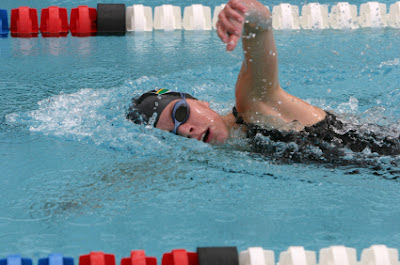How to Swim Faster and Win More with the Biomechanics of Swimming
To swim faster, it helps to understand the biomechanics of swimming. Slight adjustments to one's technique can improve strength and flexibility, plus reduce the likelihood of injury.
 |
| Biomechanics of Swimming |
Faster swimming comes from three main sources: travelling more distance per stroke, reducing drag due to improved core strength, and improving turn performance. Ultimately, it comes down to minimizing drag and increasing aerobic and anaerobic efficiency.
Drills and exercises can target many areas of swimming performance, including form, strength, endurance, range of motion, and neuromuscular control. Breathing drills, practising with hand paddles, and kick technique exercises are all useful. Nutrition and mental preparation are important to a swimmer as well. USA Swimming’s American Development Model is a good resource.
Key Takeaways:
- To swim faster, improve the distance per stroke, turn performance, and core strength.
- Swimming underwater after turns reduces hydrodynamic drag but increases anaerobic demand because the swimmer isn't breathing.
- Strength, breathing, hand paddling and kicking can all be trained for improvement.
"Learning about the biomechanics of swimming, the techniques and exercises that support fast and safe swimming, the fuel, and the mental resources needed to achieve top performance are all part of the process of swimming faster and winning more."
Read more: https://exsci.cuchicago.edu/exercise-physiology/how-to-swim-faster/
Enjoy
Richard

No comments:
Post a Comment